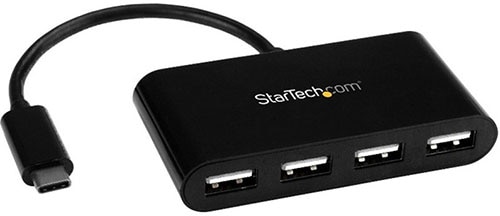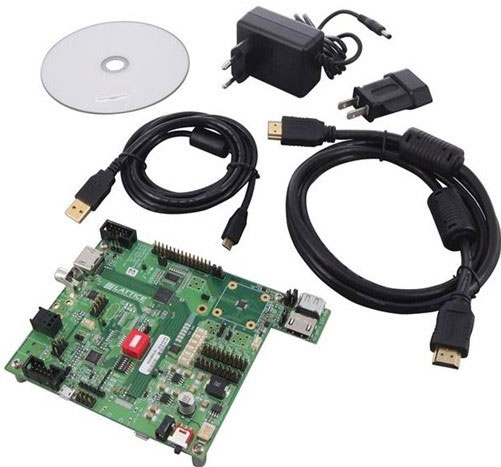混淆 HDMI、HDMI ARC 和 HDMI eARC 有风险
家庭影院的消费者和设计者都应注意格式的兼容性问题
你想打造或者设计一套家庭影院吗?我可以告诉你,这并不容易。
买下第一套房子后,我和妻子就想拥有完整的体验:在没有灯光的房间里播放杜比 Atmos 环绕音乐,欣赏投影仪在洁白的墙壁上投射出的影像。我虽然是影院发烧友,也写了 10 多年的技术文章,但我对即将面临的 HDMI 端口兼容性问题却毫无准备。
是的,HDMI 端口有很多种——就像 USB 一样。
 图 1:你需要哪种“通用”串行总线:USB、micro-USB 还是 USB-C?(图片来源:StarTech.com)
图 1:你需要哪种“通用”串行总线:USB、micro-USB 还是 USB-C?(图片来源:StarTech.com)
打造我梦想中的地下室家庭影院
我的计划是:打造一套尽可能无线、尽可能简单的家庭影院。因此,Sonos 自然而然地吸引了我。这套设备具有无线功能,只需四个单元就能模拟 7.1.4 环绕声,而无需接收器。通常情况下,这种音效设置需要在座位高度上安装 7 个喇叭、1 个低音炮、4 个天花板喇叭和 1 个用于控制所有喇叭的接收器。但是,Sonos 通过将声音从墙壁上弹射出去的方式来实现这种近似体验。
Sonos Arc 条形音箱可通过无线方式连接低音炮和后置喇叭,这不成问题。不过,我很快发现需要将音箱与电视或投影仪采用有线 HDMI 连接,才能实现影院功能。关于无线功能就说这些了——但那是另外一个故事。
我没有,也不希望从投影仪到 Soundbar 的 HDMI 连接线穿过整个房间,但这样做也并非是世界末日。不过,犯了这个错误之后,我认为最好在买新东西之前先测试一下这种设置。我用一根较细的电线连接这台设备,但没有出现令人震撼的画面和声音,而是一片寂静和墙上的波浪线。显然,HDMI 还不够好。
三个、六个,也许更多——HDMI 的故事
Sonos Arc 需要 HDMI ARC(音频回传通道)或 HDMI eARC(增强音频控制通道)连接。而我的投影仪没有这两种连接,只有 HDMI 2.0。
 图 2:SiI9437 HDMI eARC 音频/视频评估板。(图片来源: Lattice Semiconductor Corp)
图 2:SiI9437 HDMI eARC 音频/视频评估板。(图片来源: Lattice Semiconductor Corp)
通过 HDMI ARC 连接,电视机或投影仪能够将音频信号直接发送到接收器或音箱。这样做的目的是为了减少电缆数量。蓝光播放器、游戏系统和智能电视盒不再需要两条输出线(分别连接显示屏和音响系统),而只需要连接到电视或投影仪。剩下的事儿交给电视机或投影仪上的 HDMI ARC 端口就可以了。
至于 eARC,其工作原理大致相同,但可以处理更高的信号质量、速度和带宽。此外,eARC 与 ARC 向后不兼容。但是,一些家庭影院设备设计者可以使其成为可能。换句话说,如果您是消费者,请阅读标签;如果您是设计者,请“请善待并倒回去”。
遗憾的是,事情至此开始变得更加棘手。这对消费者和家庭影院设备设计者来说都不是一件好事。例如,HDMI 端口有各种形状和尺寸。大多数人都熟悉标准 HDMI 接口,但这种接口也有小型和微型之分,就像 USB 接口一样。因此,有了以上三种选择,就需要注意有六种不同的 HDMI 端口。
某些 HDMI 版本中还有一些功能,而其他版本则没有。这包括基于信号源的音调映射 (SBTM)、可变刷新率 (VRR)、自动低延迟模式 (ALLM)、快速帧传输 (QFT) 和快速媒体切换 (QMS) 等功能。如果想知道自己的 HDMI 兼容哪些功能,则需要查找的版本代码范围为 1.0 到 1.4,以及 2.0 到 2.1b。
那么,我是如何解决影院问题的呢?我研究了能接收信号并分离视频和音频的 HDMI 分离器。最终效果非常好。现在,我有一台功能正常的投影仪,通过许多电缆连接 7.1.4 环绕声系统,完全兼容杜比 Atmos。
如何避免 HDMI 的兼容性问题
在设计完美的家庭影院,购买音响和投影仪设备时,我犯了书中最古老的工程错误:兼容性问题。虽然这次方钉可以插入圆孔——因为所有的端口都是标准 HDMI 大小——但它们互不兼容。
因此,千万不要犯这种错误。如果你正在设计自己的家庭影院,或者您正在自行设计设备并准备购买部件,请先访问 HDMI 许可管理员网站获取帮助。

Have questions or comments? Continue the conversation on TechForum, Digi-Key's online community and technical resource.
Visit TechForum








 中国
中国